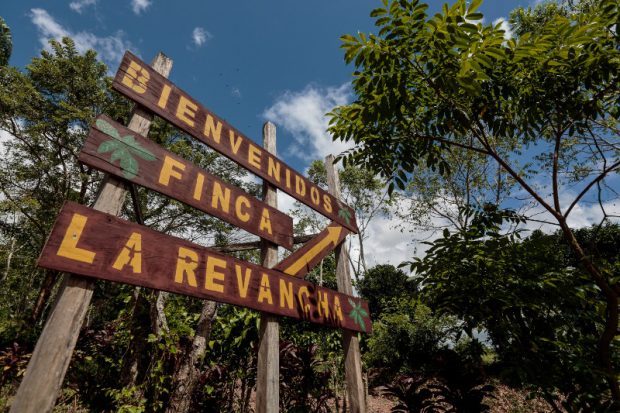While the hundreds of coffee news and features stories constituted the bulk of our editorial coverage this year, there were also plenty of occasions for a bit of opinion sharing and some deeper, more intimate looks at some of the industry’s more complicated problems.
Below we’ve compiled a handful of our favorite and most resonant columns published this year. Between a collaborative series with the SCAA Sustainability Council and posts from our friends at the CRS Coffeelands blog, the content of our columns in 2016 leaned heavily — but not exclusively — toward various sustainability issues and efforts at origin, such as farmworker inclusion, climate change and price risk management. Therefore we’ve divided the following year-in-review roundup into two essential categories.
First comes “Everything Else,” which, as the heading suggests, wanders discursively from things like package design trends to wacky cuppings to technical musings such as centerlining cupping protocol. Following that, a swath of deep-digging origin-focused thought-provokers spanning the currently ending calendar year, for us to reflect upon once more as we set our sites hopefully on progress in 2017 and beyond.
Everything Else
Outside the Box: Thoughts On Coffee’s Latest Design Trend
“The box — literally a metaphor for uncreative thinking — is emerging as a popular packaging trend among some of the most creative people in coffee.”
Why Naturals Should Play a Big Role in the Future of Specialty Coffee
“Six years ago, James Hoffmann started a post on natural coffees, saying, “You could say this debate is old news, but somehow it still seems to be rumbling on.” Well, I’m fairly new to specialty coffee, and I’m so green to natural coffees that I was surprised (and delighted) to discover there was a debate.”
Is Specialty Coffee Missing an Opportunity in Cold Brew?
“Is cold brew coffee a category or a craze? This question was posed at the recent Re:Co Specialty Coffee Symposium in Atlanta last week. While those two may not be mutually exclusive, the prevailing presumption was that cold brew is indeed a category — a remarkably fast-growing one, at that — while it is also poorly defined, misunderstood by consumers, and in very real danger of being diminished as a value proposition as quick-adopters of cold brew rush questionable products to the marketplace.”
US Consumers Paying Less for Coffee Now Than They Have Over the Past 50 Years
“We’ve heard time and time again from coffee companies seeking sustainable forms of equity for players throughout their supply chains that a cup of coffee ought to cost more. New analysis from the genealogy firm MooseRoots, powered by the data research firm Graphiq, seems to firmly back up that assertion.”
One Coffee’s Sojourn Measured in Human Hands and Daily Temperatures
“Once a coffee cherry is picked from the branch, every step it takes until it’s brewed is a desperate act of preservation, a struggle against the entropy that will inevitably degrade the dying seed. In a perfect world, short distances travelled in stable environments would contribute to that preservation — but the coffee-drinking world isn’t confined to the tropical climes in which the tree thrives.”
Why You Should Be Centerlining Your Cupping Protocol
“Cupping is a widely used practice in the coffee industry, and while good standards for cupping exist, few companies put in the effort to rigorously determine what cupping practices will work best for their needs or even verify that their practices match standards they claim to use.”
Blue Bottle and Colonna on Taking the Grind Out of Home Brewing
“Thus, in some sense, it feels as though these companies and some recent others, such as two-time Finnish Barista Champion Kalle Freese’s relatively new single-serve soluble-coffee-focused Sudden Coffee, are boldly ignoring what has long been considered the first rule in quality home brewing: grind just before brewing.”
Coffee Industry Leadership in the Age of Superlatives
“In the coffee industry, we have developed a habit of using superlatives and exaggerations to communicate our support for people or activities. Considering that in our industry we share the supply chain, technology and often customers with our competitors, it has become vital to our individuality to communicate our points of differentiation.”
Understanding Roast-to-Cup Differences through Profile Translation Analysis
“A common piece of advice for coffee roasters is to make sure they’re connecting their detailed roasting records to their cupping or tasting results, in order to develop the experience that allows them to quickly diagnose roasting issues and understand how roasting plans can be changed to improve their roasts. Often left out of that advice is what they should be looking for in that roasting data, and how to meaningfully connect those differences to the differences they find in the cup.”
Reflections on an Intentionally Mind-Boggling Afternoon of Coffee Tastings
“We set up three exercises. The first examined the effect of the color of a cup on sensory perception; the second looked at cupping context and what flavor perceptions might be altered by a coffee’s neighboring cups; and the final exercise used extreme sensory distraction in the form of molasses, vinegar, and soy sauce to examine the effect on taste.”
Sustainability
Three Important Takeaways SCAA 2016: Policy, Progress and Paul Katzeff
“Nearly two months have passed since the curtains closed on the 2016 SCAA events in Atlanta, but like the great Ray Charles, I still have Georgia on my mind. Three Ps stand out in my reflections: Policy, Progress and Paul Katzeff.”
The SCAA Sustainability Council and the Theory of Change
“Sustainability is a word that conjures different images to different people: trees, our planet as seen from space, polar bears, people holding hands, etc. Many people associate the term with environmental conservation. But is that a fair characterization of sustainability? And what does sustainability mean to specialty coffee? Can it be part of making coffee better?”
Price Risk Management Revisited: Reality Check And Back To Basics
“If you have been following this blog, you may have seen a series of posts on price risk management and its increasing importance in collectively developing a more sustainable sector that protects actors throughout the coffee supply chain. I’ve been writing about this topic for the past nine months and talking about it for even longer. Finally, this last week, I got to walk the walk.”
Coffee Farmworkers: The Next Step, from Research to Action
“Labor is a key factor for the success and viability of the coffee industry, yet farms are currently struggling to recruit and retain field hands due in part to urban migration and low incentives for performing rural work. Aware of this problem, the SCAA Sustainability Council has been developing a strategy in order to gain a greater understanding of the situation and intended to inform the industry in general.”
Farmworker Inclusion: A New Sustainability Frontier in Specialty Coffee
“These are opportunities to mitigate brand risk in a media environment that loves scandal, and to mitigate legal risk in a regulatory environment that is cracking down on the worst forms of labor abuse; opportunities to secure supply and to identify hidden sources of value in a market environment characterized by intense competition; and, ultimately, opportunities to renew the specialty coffee brand by including tens of millions of people on whom the specialty enterprise depends in the benefits it creates.”
Mapping the Way to Farmworker Inclusion
“Maps provide us knowledge of where we are, and help us navigate our way to our destination. They tell us how far we’ve come, and how far we have yet to go. Without maps, we’re blind to what challenges or obstacles lie ahead.”
How the SCAA Sustainability Council is Approaching the Daunting Problem of Climate Change
“Simply stated, climate change is caused by an increased concentration of greenhouse gases, like carbon dioxide and methane, in the earth’s atmosphere. The most well-known impact of this increased concentration is an increase in temperature, predicted by the IPCC to be between 0.5 and 8.7 degrees Fahrenheit over the next century.”
Opinion: In The US and the World, Troubling Times for Climate and Coffee
“As by far the world’s largest importer of coffee, it would seem this country would have a vested economic interest in mitigating the proven and projected effects of climate change in growing regions throughout the world, especially as global consumption is expected to increase, further tightening the market.”















Comment